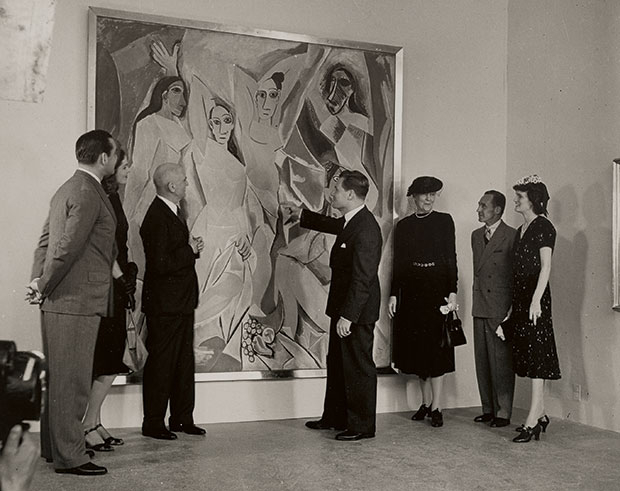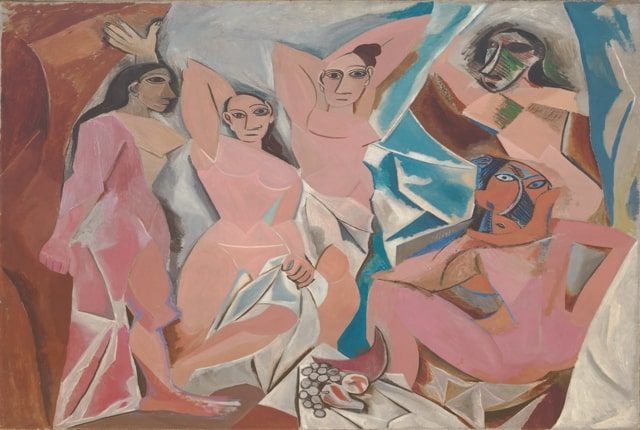Picasso’s Les Demoiselles D’avignon Was A Revolution
The fifth interesting fact about Cubism related to the Les Demoiselles D’avignon by Picasso. The painting, which is a part of the Museum of Modern Art's permanent collection, depicts five naked women working as prostitutes in a brothel on Carrer d'Avinyó in Barcelona, Spain. None of the figures are traditionally feminine, and they are all drawn in an unsettlingly confrontational style. The body contours of the women are jagged and fragmented, giving them a slightly threatening appearance. The person on the left has face traits and attire reminiscent of ancient Egypt or southern Asia. Picasso's native Spain's Iberian culture is depicted in the two figures next to each other, while the two figures to the right have traits similar to those of an African mask.
Pablo Picasso painted Les Demoiselles d'Avignon (The Young Ladies of Avignon) in 1907. It is recognized as a significant step towards the development of the Cubist movement and is frequently referred to as Picasso's most significant work. It is also regarded as one of those crucial aesthetic moments that undeniably separates the past from the future. Picasso portrayed each person in the painting using a distinct technique, with the most explicitly Cubist part being the head of the woman tugging the curtain in the upper right. Les Demoiselles d'Avignon is categorized as proto-Cubist or pre-Cubist even though it was a significant first step towards Cubism.












